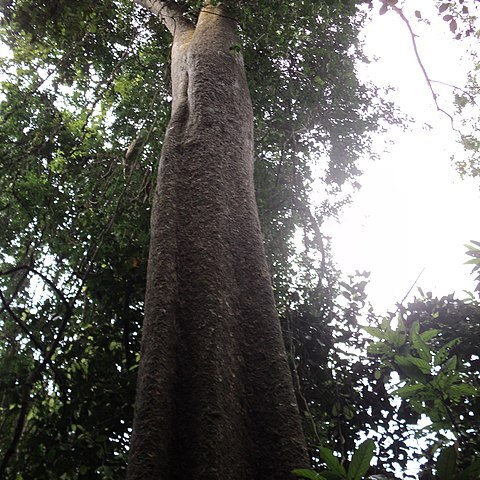Tree, monoecious. Indumentum of solitary simple hairs only. Leaves paripinnate, 3-6-jugate; leaf axes sparsely minutely puberulous (to glabrous). Leaflets opposite to alter-nate, smooth beneath; the margin hardly to coarsely crenate-to serrate-dentate, especial-ly in the upper half (to entire); domatia absent; nerves ending in the teeth or in the inci-sions, in the former case alternating with intersecondary nerves ending in the incisions or not, in entire parts nerves looped and joined near the margin. Inflorescences terminal and in the upper leaf axils. Flowers unisexual, regular. Sepals 5, ± valvate in bud, all equal, not petaloid, hairy on both sides, margin entire. Petals 5, shorter than or about equal to the sepals, not or hardly clawed, glabrous or inside slightly hairy in the upper part, entire, just above the base with a scale varying from somewhat shorter to much longer than the petal itself, woolly on both sides. Disc a ring adnate to the torus, flat except for the margin, with an erect rim to tubular collar up to c. 0.5 mm high, thin-fleshy, glabrous. Stamens (6) 7, 8 (9), distinctly exserted in male flowers; filaments sparsely woolly in the lower half (or for the greater part); anthers glabrous, dehiscence latrorse. Pistil short-stalked or sessile, densely hairy, 3-locular; ovules 1 per locule; style apical, somewhat longer than the ovary, apically with two stigmatic lines (or in fruit, probably only after fertilization, with two minute, hardly spreading lobes). Fruits capsular, hardly stipitate, with up to 3 partly connate globular lobes, loculicidally dehiscent, often ± crested along the suture outside, when young slightly coarsely warty, when mature a bit rough to scurfy; wall thick and woody, glabrous on both surfaces. Seeds with a large glabrous sarcotesta around the hilum.
More
Trees, evergreen, monoecious. Leaves paripinnate, estipulate, rachis terete; leaflets serrate or entire. Thyrses often multibranched, axillary or several fascicled near apex. Flowers unisexual or polygamous, actinomorphic. Sepals 5, free, valvate. Petals 5, sometimes 6 or 7, not or hardly clawed, with 1 large scale adaxially. Disk cupular, contracted above middle, margin thin, deeply wavy. Stamens (male and bisexual flowers) 8, sometimes 9, exserted; filaments filiform, usually unequal in length; anthers ellipsoid, connectives large, slightly prominent. Ovary (female and bisexual flowers) turbinate, 3-lobed and 3-loculed; ovules 1 per locule; style inserted between ovary lobes, nearly as long as or slightly longer than ovary. Capsules deeply lobed into 3 schizocarps, only 1 or 2 developed, loculicidal into 3 carpels; pericarp rigid, woody. Seeds subglobose or slightly flat; testa pale brown, shiny, leathery, arillode absent; hilum transversely elliptic, large; embryo curved.

